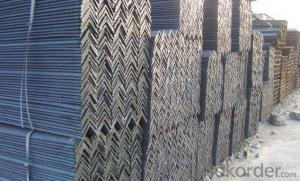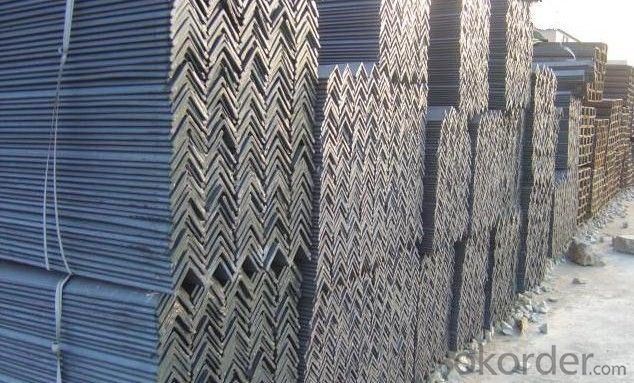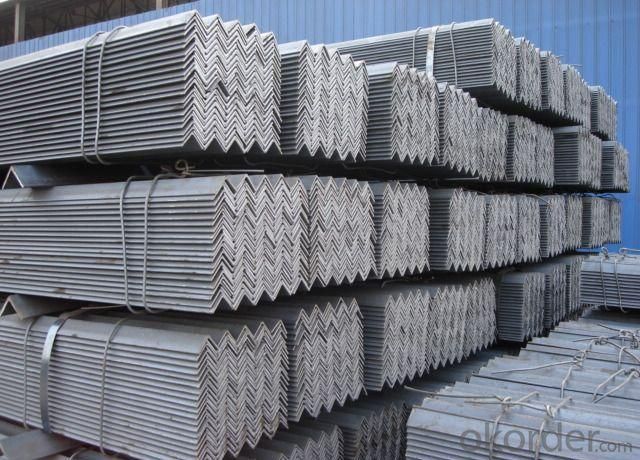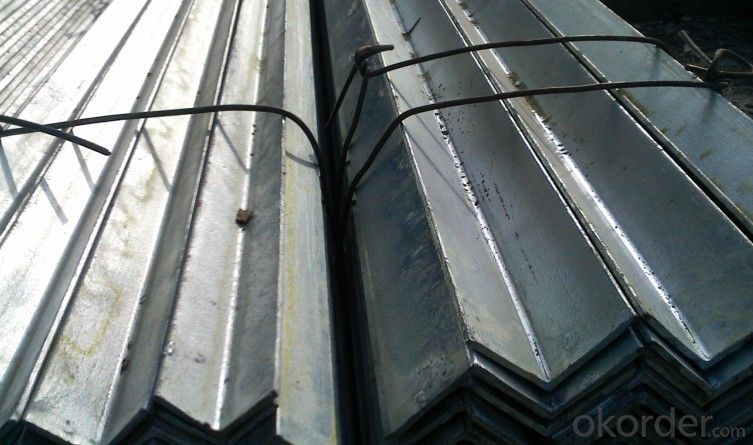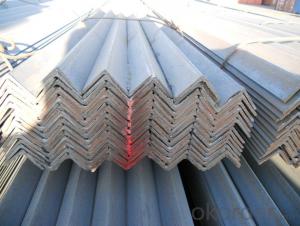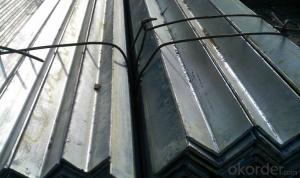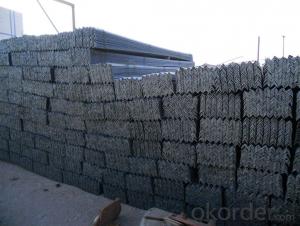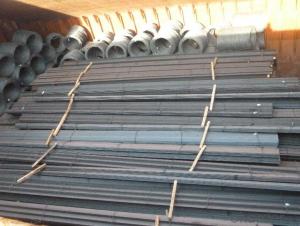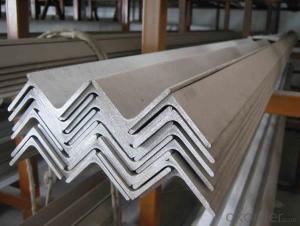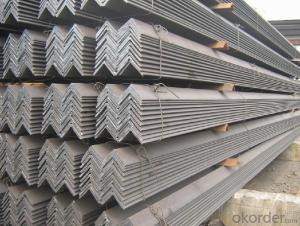GB Q235 Steel Angle with High Quality 25*25mm
- Loading Port:
- Tianjin
- Payment Terms:
- TT or LC
- Min Order Qty:
- 25 m.t
- Supply Capability:
- 10000 m.t/month
OKorder Service Pledge
OKorder Financial Service
You Might Also Like
Specifications of GB Q235 Steel Angle with High Quality 25*25mm:
1.Standards:GB
2.Length:6m, 12m
3.Material:Q235 or equivalent
4.Size:
Size (mm) | Mass (kg/m) | Size (mm) | Mass (kg/m) |
| 25*25*2.5 | 0.95 | 25*25*3 | 1.124 |
| 25*25*2.7 | 1.02 | 25*25*4 | 1.459 |
Usage & Applications of GB Q235 Steel Angle with High Quality 25*25mm:
Trusses;
Transmission towers;
Telecommunication towers;
Bracing for general structures;
Stiffeners in structural use.
Packaging & Delivery of GB Q235 Steel Angle with High Quality 25*25mm:
1. Transportation: the goods are delivered by truck from mill to loading port, the maximum quantity can be loaded is around 40MTs by each truck. If the order quantity cannot reach the full truck loaded, the transportation cost per ton will be little higher than full load.
2. With bundles and load in 20 feet/40 feet container, or by bulk cargo, also we could do as customers' request.
3. Marks:
Color mark: There will be color marking on both end of the bundle for the cargo delivered by bulk vessel. That makes it easily to distinguish at the destination port.
Tag mark: There will be tag mark tied up on the bundles. The information usually including supplier logo and name, product name, made in China, shipping marks and other information request by the customer.
If loading by container the marking is not needed, but we will prepare it as customers' request.
FAQ:
Q1: Why buy Materials & Equipment from OKorder.com?
A1: All products offered byOKorder.com are carefully selected from China's most reliable manufacturing enterprises. Through its ISO certifications, OKorder.com adheres to the highest standards and a commitment to supply chain safety and customer satisfaction.
Q2: How do we guarantee the quality of our products?
A2: We have established an advanced quality management system which conducts strict quality tests at every step, from raw materials to the final product. At the same time, we provide extensive follow-up service assurances as required.
Q3: How soon can we receive the product after purchase?
A3: Within three days of placing an order, we will arrange production. The shipping date is dependent upon the quatity, how many sizes you want and the plan of production, but is typically 30 to 45 days from the beginning of production.
Images of GB Q235 Steel Angle with High Quality 25*25mm:
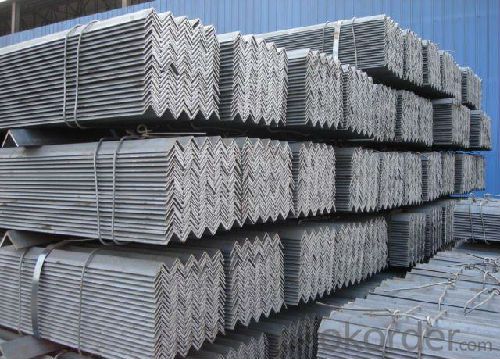
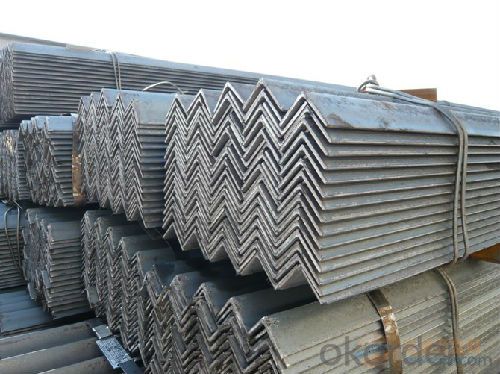
*If you would like to get our price, please inform us the size, standard/material and quantity. Thank you very much for your attention.
- Q: What is the maximum allowable torsional buckling stress for a steel angle?
- The maximum allowable torsional buckling stress for a steel angle depends on various factors such as the material properties, angle dimensions, and the specific design code or standard being followed. Therefore, without specific information, it is not possible to provide a definitive answer. It is recommended to consult the relevant design code or a structural engineer to determine the maximum allowable torsional buckling stress for a steel angle.
- Q: How do steel angles contribute to the overall durability of a structure?
- Angle irons, also known as steel angles or L-shaped structural steel, play a crucial role in strengthening structures and improving their durability. These versatile components are commonly used in construction projects because they provide strength, stability, and support. To begin with, steel angles are designed to bear heavy loads and forces. They evenly distribute the weight, preventing structural failures and ensuring the longevity of the building. This is especially important in situations where the structure is exposed to dynamic forces like wind, earthquakes, or heavy machinery. Furthermore, steel angles act as effective reinforcements in critical areas of a structure. They reinforce connections between different structural members, such as beams and columns, creating a strong framework. This reinforcement enhances the overall load-bearing capacity of the structure, allowing it to withstand greater loads without compromising its integrity. Moreover, steel angles offer lateral stability to buildings. By diagonally connecting various components, they resist horizontal forces caused by wind or seismic activity. This lateral stability is vital in preventing the structure from swaying or collapsing under extreme conditions, ensuring the safety of occupants. Additionally, steel angles have high resistance to corrosion, a common cause of structure deterioration. Using galvanized or stainless steel angles significantly reduces the risk of rusting and subsequent degradation. This corrosion resistance contributes to the long-term durability of the structure, reducing maintenance costs and extending its lifespan. In conclusion, steel angles are vital for enhancing the overall durability of structures due to their ability to withstand heavy loads, provide reinforcement, offer lateral stability, and resist corrosion. By incorporating steel angles into construction projects, engineers can ensure the structural integrity and longevity of buildings, ultimately creating safer and more durable spaces.
- Q: How are steel angles made?
- Steel angles are made through a process called hot rolling. It starts with heating a large steel billet in a furnace at very high temperatures until it becomes malleable. The heated billet is then passed through a series of rollers to shape it into the desired angle profile. These rollers have grooves that match the desired angle dimensions, which allow the steel to be gradually formed into the angle shape. As the steel billet is pushed through the rollers, it is compressed and elongated, resulting in a longer and thinner piece of steel with the desired angle shape. This process helps to improve the mechanical properties of the steel, making it stronger and more durable. Once the steel angle is formed, it goes through a cooling process to stabilize its shape and prevent any deformation. It is then cut to the required length and undergoes various finishing processes, including straightening, surface treatment, and inspection, to ensure its quality and dimensional accuracy. Overall, the production of steel angles involves heating, rolling, cooling, cutting, and finishing processes, all designed to create high-quality and precisely shaped steel angles that can be used in various construction and manufacturing applications.
- Q: Can steel angles be used in the construction of industrial chimneys?
- Yes, steel angles can be used in the construction of industrial chimneys. Steel angles are commonly used as structural components in various construction projects due to their strength, durability, and versatility. In the case of industrial chimneys, steel angles can be used to provide support and stability to the chimney structure. They can be incorporated into the design to reinforce the chimney's framework, particularly at the corners and joints where additional strength is required. Additionally, steel angles can also be used to create a base or foundation for the chimney, ensuring stability and preventing any potential structural issues. Overall, steel angles are a suitable choice for the construction of industrial chimneys due to their ability to withstand the high temperatures and harsh conditions associated with chimney operation.
- Q: How do you calculate the bending capacity of a steel angle?
- To calculate the bending capacity of a steel angle, you need to consider a few factors. The first step is to determine the moment of inertia (I) of the angle section, which is a measure of its resistance to bending. The moment of inertia depends on the shape and dimensions of the angle and can be found in the manufacturer's specifications or through calculations. Once you have the moment of inertia, you can calculate the section modulus (Z), which is another measure of the section's ability to resist bending. The section modulus is calculated by dividing the moment of inertia by the distance from the centroid of the section to the extreme fiber. Next, you need to determine the maximum allowable bending stress (σ) for the steel angle. This value is typically provided by the manufacturer or can be determined based on the desired safety factor and the type of steel being used. Finally, you can calculate the bending capacity (M) of the steel angle using the formula M = σ * Z. This calculation gives you the maximum moment that the angle can withstand without undergoing excessive bending stress. It is important to note that these calculations assume elastic behavior and do not take into account other factors such as local buckling, residual stresses, or combined loading. Therefore, it is recommended to consult relevant design codes or guidelines for a more comprehensive analysis to ensure the safety and reliability of the steel angle in a specific application.
- Q: What is the cost of steel angles compared to other structural materials?
- The cost of steel angles compared to other structural materials can vary depending on factors such as the specific type of material, market conditions, and quantity needed. However, generally speaking, steel angles tend to be a cost-effective choice for structural applications due to their durability, strength, and versatility.
- Q: What are the different methods of surface preparation for painting steel angles?
- Some different methods of surface preparation for painting steel angles include abrasive blasting, chemical cleaning, and power tool cleaning. Abrasive blasting involves using high-pressure air or water to propel abrasive materials onto the surface of the steel angle, removing any rust, scale, or other contaminants. Chemical cleaning involves applying specific chemicals to the steel angle to dissolve or remove any contaminants. Power tool cleaning involves using power tools such as grinders or sanders to mechanically remove any rust, scale, or other contaminants from the surface of the steel angle.
- Q: What is the maximum length for a curved steel angle?
- The maximum length for a curved steel angle depends on several factors, including the diameter of the curve, the thickness of the steel, and the specific requirements of the project or application. In general, the length of a curved steel angle can vary from a few inches to several feet. However, it is important to consult with a structural engineer or a manufacturer to determine the maximum length that can be achieved without compromising the structural integrity of the angle. Additionally, the manufacturing process and equipment available may also play a role in determining the maximum length achievable for a curved steel angle.
- Q: Which is cheaper, angle iron or steel pipe?
- Steel pipe is not only used to transport fluid and powder solid, exchange heat energy, and manufacture mechanical parts and containers, but also is an economic steel. It can reduce weight and save 20 to 40% of metal by using steel pipe to make building structure, network frame, prop and mechanical support. Moreover, it can realize factory mechanization construction. Using steel pipe to manufacture road bridge can not only save steel, simplify construction, but also greatly reduce the area of coating protective layer, save investment and maintenance cost.
- Q: Can steel angles be used for conveyor systems?
- Yes, steel angles can be used for conveyor systems. Steel angles are commonly used in construction and industrial applications due to their strength, durability, and versatility. In conveyor systems, steel angles are often used to provide structural support and stability to the conveyor framework. They can be used to connect various components of the conveyor system, such as the conveyor belt, rollers, and motor, ensuring proper alignment and smooth operation. Additionally, steel angles can be easily fabricated and customized to meet specific design requirements, making them a suitable choice for conveyor systems of different sizes and configurations.
Send your message to us
GB Q235 Steel Angle with High Quality 25*25mm
- Loading Port:
- Tianjin
- Payment Terms:
- TT or LC
- Min Order Qty:
- 25 m.t
- Supply Capability:
- 10000 m.t/month
OKorder Service Pledge
OKorder Financial Service
Similar products
Hot products
Hot Searches
Related keywords
